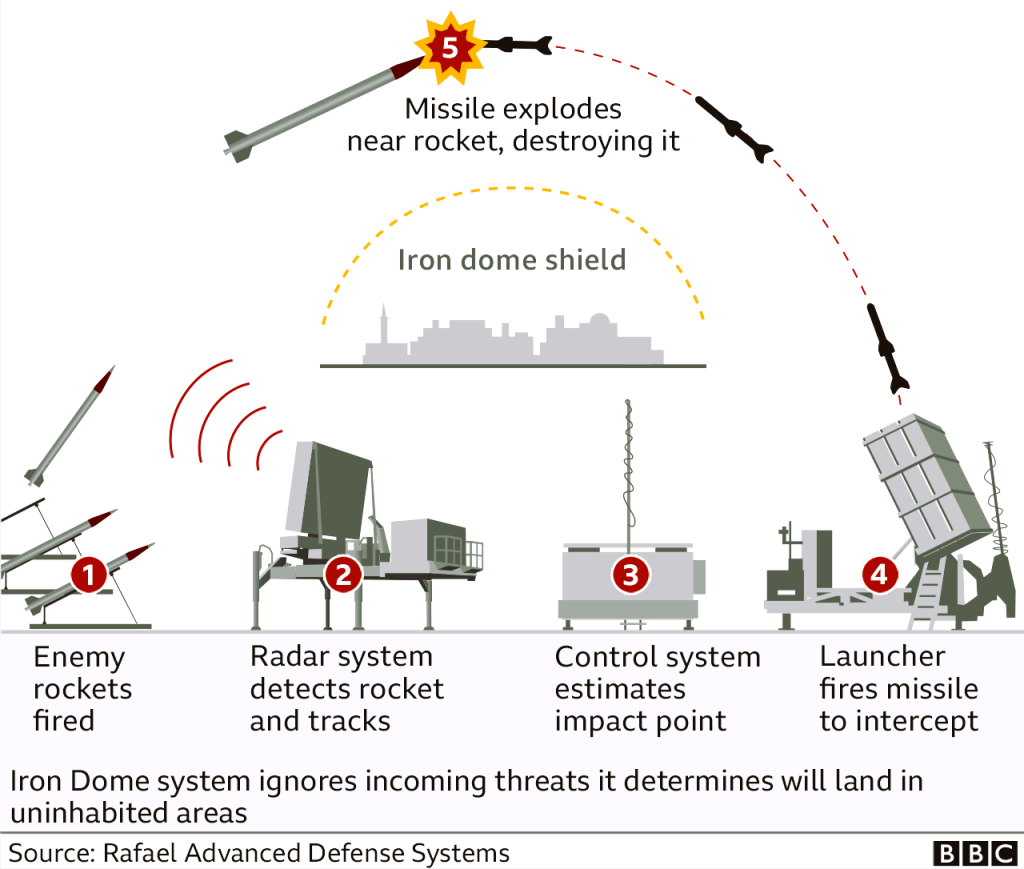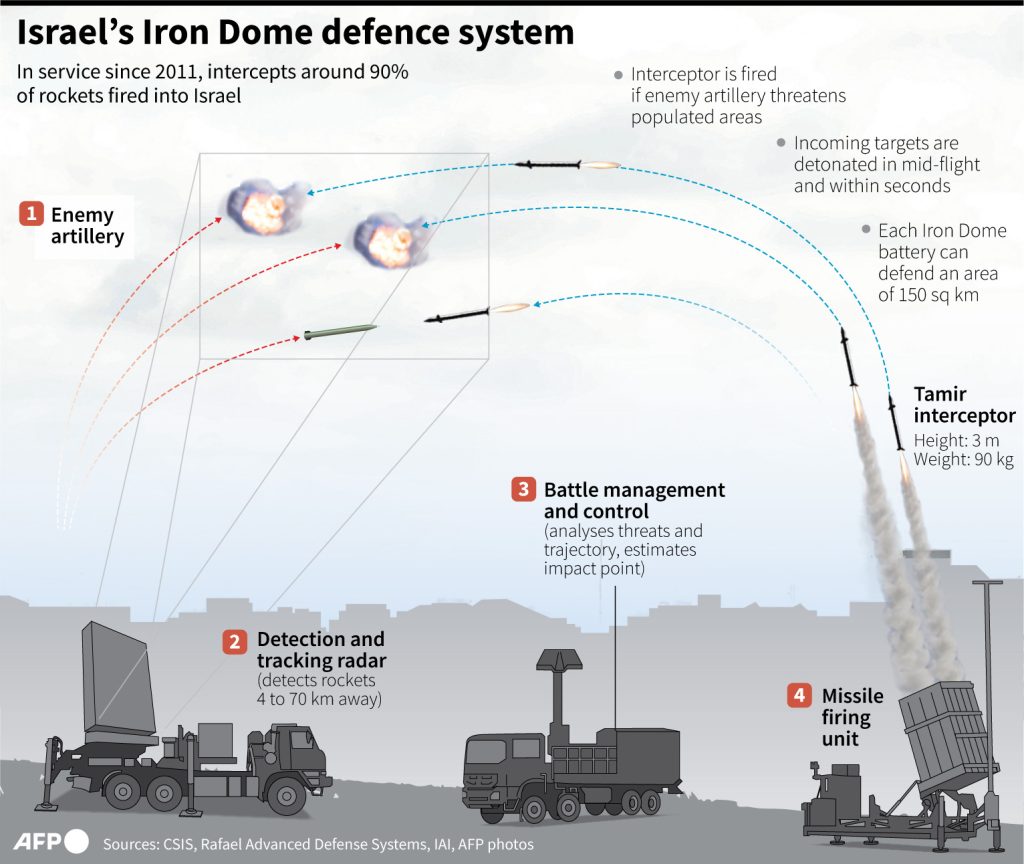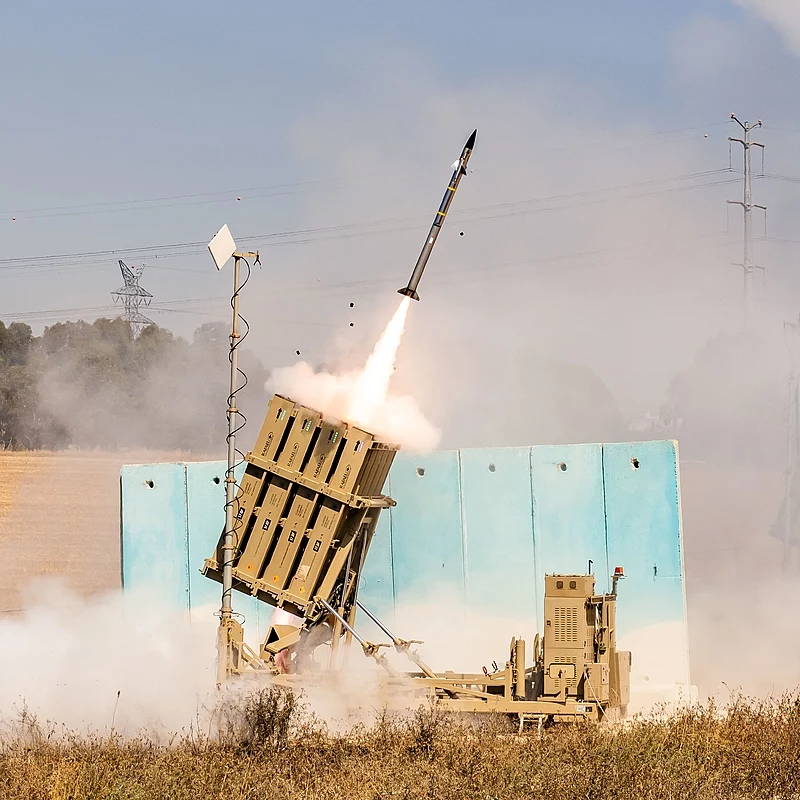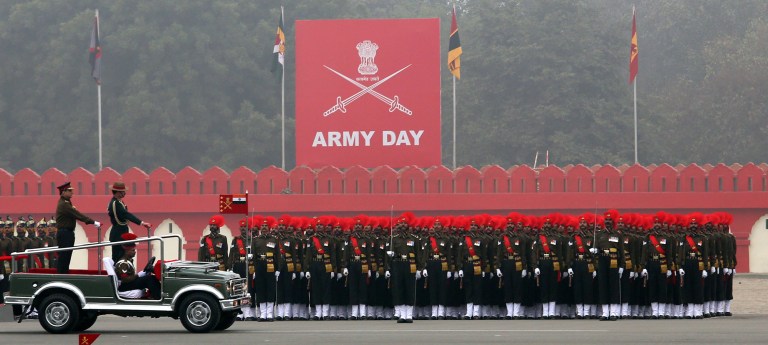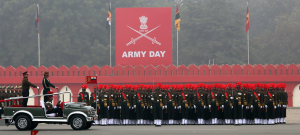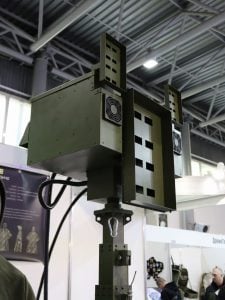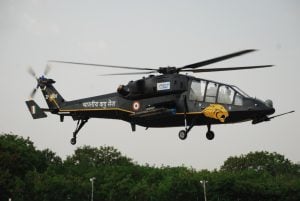The Iron Dome is a state-of-the-art missile defense system developed by Israel to protect its citizens from incoming threats. It is a critical component of Israel’s national security and has proven to be highly effective in intercepting and neutralizing enemy projectiles. The Iron Dome operates by detecting and tracking incoming threats, deploying interceptor missiles to destroy them before they can cause harm. In this article, we will explore the inner workings of the Iron Dome system and shed light on its capabilities and limitations.
The purpose and importance of the Iron Dome
The primary purpose of the Iron Dome is to protect Israel’s population centers from a wide range of aerial threats, including rockets, artillery shells, and mortars. Its importance cannot be overstated, as it has saved countless lives and prevented significant damage to infrastructure. The Iron Dome provides a crucial layer of defense, particularly against short-range projectiles that can be launched with little warning.
How does the Iron Dome detect and track incoming threats?
The Iron Dome employs a sophisticated radar system to detect and track incoming threats. This radar network spans across Israel and constantly scans the sky for any signs of hostile projectiles. When a threat is detected, the radar system calculates its trajectory and predicts its impact point with remarkable accuracy. This information is then relayed to the command and control center, where decisions are made regarding whether to engage the threat or not.
The interceptor missile system of the Iron Dome
Once a threat has been identified and its trajectory determined, the Iron Dome deploys interceptor missiles to intercept and destroy the incoming projectile. These interceptor missiles are highly advanced and capable of reaching supersonic speeds. Equipped with cutting-edge guidance systems, they are able to precisely track and engage the threat, neutralizing it before it can reach its intended target. The interceptor missiles are launched from mobile platforms strategically positioned throughout Israel, allowing for rapid response times.
The role of radar in the Iron Dome’s operation
Radar plays a crucial role in the operation of the Iron Dome system. It is responsible for detecting and tracking incoming threats, providing real-time data to the command and control center. The radar system used by the Iron Dome is highly advanced and capable of detecting even small and fast-moving projectiles. It employs a combination of surveillance and tracking radars to ensure comprehensive coverage and accurate threat assessment.
The command and control center of the Iron Dome
At the heart of the Iron Dome system is a sophisticated command and control center. This center receives data from the radar system and makes critical decisions regarding the engagement of incoming threats. Highly trained operators analyze the incoming threat data and assess the potential risk to populated areas. Based on this analysis, they decide whether to launch interceptor missiles or allow the threat to pass uncontested. The command and control center also coordinates the deployment of interceptor missiles and ensures effective communication with other defense systems.
Limitations and challenges faced by the Iron Dome
While the Iron Dome is an impressive and effective defense system, it does have its limitations and faces certain challenges. One of the primary limitations is its inability to intercept every incoming threat. The system is designed to prioritize high-value targets and threats that pose a significant risk to populated areas. However, it may not be able to engage every projectile, particularly in situations where large salvos are fired simultaneously. Additionally, the Iron Dome is most effective against short-range threats and may struggle to intercept longer-range missiles.
Success stories and real-world examples of the Iron Dome in action
The Iron Dome has a proven track record of success, with numerous real-world examples of its effectiveness. One notable success story is the interception of rockets fired from the Gaza Strip towards Israeli cities. The Iron Dome has successfully intercepted and destroyed a significant number of these rockets, preventing casualties and damage. Its quick response time and high interception rate have made it a valuable asset in Israel’s defense strategy.
Criticisms and controversies surrounding the Iron Dome
Despite its undeniable success, the Iron Dome has not been without its share of criticisms and controversies. Some argue that the system is too expensive and question the cost-effectiveness of intercepting every incoming threat. Others claim that the Iron Dome perpetuates a cycle of violence by enabling Israel to respond aggressively to attacks. Additionally, there have been concerns raised regarding the system’s accuracy and its ability to distinguish between legitimate threats and false alarms.
Conclusion: The future of the Iron Dome system
The Iron Dome has undoubtedly revolutionized Israel’s defense capabilities and provided a significant boost to its national security. As technology continues to advance, it is likely that the Iron Dome system will evolve to meet new challenges and threats. The ongoing development and improvement of missile defense systems will be crucial in ensuring the safety and security of nations around the world. The Iron Dome stands as a testament to the power of innovation and serves as a reminder of the importance of investing in defense technology.

